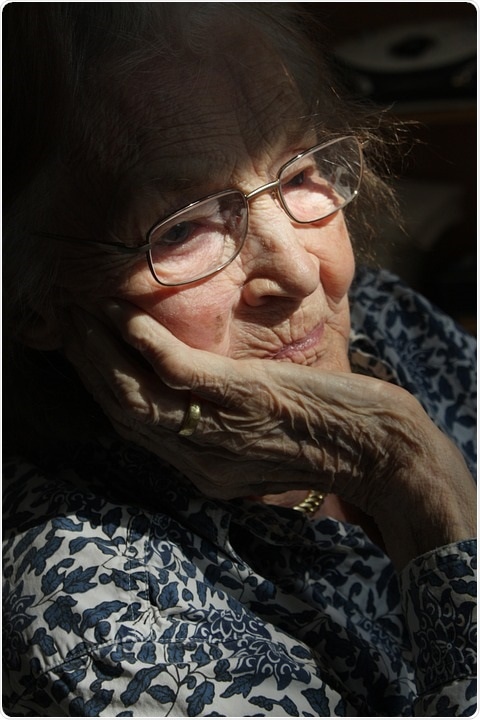A lot about the human brain and its intricacies continue to remain a mystery. With the advancement of neurobiology, the pathogenesis of several neurodegenerative diseases (ND) has been uncovered to a certain extent along with molecular targets around which current therapies revolve. However, while the current treatments offer temporary symptomatic relief and slow down the course of the disease, they do not completely cure the condition and are often accompanied by a myriad of side effects that can impair normal daily functions of the patient.

Light therapy can reset disturbed circadian rhythms in patients with sleep disorders and neurodegenerative diseases and thus alleviate symptoms. Image Credit: Gerd Altmann from Pixabay
Light stimulation has been proposed as a promising therapeutic alternative for treating various ND like Alzheimer's disease (AD), Parkinson's disease (PD), cognitive and sleep disorders. Light therapy consists of controlled exposure to natural daylight or artificial light of specific wavelengths. While neurologists worldwide have begun testing its use in clinical practice, less remains understood about the mechanisms behind how light affects neurological function.
Thus, in a review article now published in Chinese Medical Journal, researchers from China comprehensively summarize the growing knowledge on the mechanism of action, effectiveness, and clinical applications of LT in the treatment of ND. Neurologist and author Dr. Chun-Feng Liu explains how their work can advance our understanding of novel emerging therapies for ND.
While light therapy has been investigated in mental and sleep disorders, comprehensive knowledge on its use in neurodegenerative diseases in lacking. We therefore sought to shed light on the potential therapeutic methods and implications of light therapy."
Dr. Chun-Feng Liu, Neurologist and author
Our body function is tuned to a circadian or day and night rhythm. The clock that controls this rhythm is housed in the hypothalamus region of the brain. The genes expressed in this region are crucial in maintaining the circadian rhythm. Thus, a malfunction of these genes can disrupt the rhythmic cycle. These defects have been associated with neurodegenerative, metabolic and sleep disorders. External stimuli such as light, physical activity and food intake can help reset the clock and restore normal circadian rhythms, thus alleviating symptoms.
Another mechanism by which the clock controls circadian rhythms is through the secretion of the melatonin (MT) hormone. MT secreted by the pineal gland in the brain is known to control sleep patterns as it is secreted in higher amounts in the night than the day. Light stimulation in this case suppresses the secretion of MT during the day time and thus reduces drowsiness.
Interestingly, different tissue and organs in the body may respond differentially to light stimulation. Furthermore, different biomolecules expressed in circulating immune cells and stem cells are sensitive to specific wavelengths of light and thus elicit different responses by promoting the secretion of neurotrophic factors that can rescue neuronal functions.
Next, the researchers go on to discuss the application of light stimulation in specific neurodegenerative disorders. In case of AD, a progressive dementia, sleep disturbance has been associated with an increased expression of biomarkers that promote disease progression. Patients with AD often experience confusion, emotional distress and hyperactivity after dusk and through the night. Preliminary clinical studies on AD mouse models as well as patients with AD suggest that light stimulation helps restore memory and cognition and decreases the burden of the pathogenic amyloid-β protein in the brain. Furthermore, LT has been shown to improve sleep quality and duration in patients with sleep disorders while bright environments help reduce anxiety and aggressive behaviors in patients with dementia.
In case of PD, patients suffer from motor impairment, tremors and posture imbalance and also display non-motor symptoms such as insomnia, depression and fatigue that can collectively impair their quality of life. While LT has been shown to decrease non-motor symptoms to some extent, evidences on its direct benefits towards motor-function however are limited.
The use of LT in other neurodegenerative disorders is currently at preclinical stages and needs to be pursued further. Overall, LT offers a safe and cost-effective alternative for treatment of ND. Additional studies and large scale clinical trials in this direction can help establish its effectiveness as a potential therapeutic strategy.
Explaining the long term clinical applications of LT, Dr. Liu says, "The light box or light therapy lamp will help improve the sleep quality of patients with sleep disorders. Light stimulation will also likely have therapeutic effects on neurodegenerative diseases and seasonal depression. Further studies are needed to elucidate its effectiveness."
This review not only advances our understanding on how LT functions in resetting the circadian rhythm and associated neurological symptoms but also highlights its applications in routine clinical practice.
Source:
Journal reference:
Liu, Y-L., et al. (2021) Light therapy: a new option for neurodegenerative diseases. Chinese Medical Journal. doi.org/10.1097/CM9.0000000000001301.